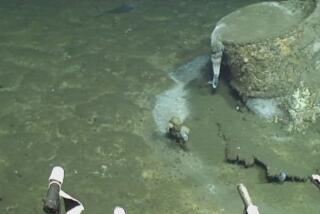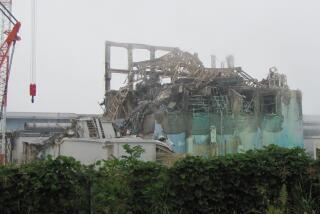EPA to Permit Burning of Toxic Waste at Sea as Test
- Share via
WASHINGTON — The Environmental Protection Agency announced plans Tuesday to permit the burning of deadly chemical wastes in the Atlantic Ocean next year in an experiment expected to lead to the first commercial U.S. permit for ocean incineration.
Larry Jensen, an assistant EPA administrator, hailed the proposed test burning as a “very significant step forward” in toxic waste management and expressed hope that dangerous wastes eventually may be burned safely on ships in the Pacific Ocean and the Gulf of Mexico. EPA officials predict that the first commercial burning permit will be issued late next year or early in 1987.
Tough recent federal regulations have substantially increased the cost and difficulty of disposing of toxic wastes on land, a factor that has increased commercial interest in incinerator ships.
Treating Lethal Garbage
But many environmentalists strongly object to incineration at sea, contending that it would destroy the incentive for companies to reduce waste production or to treat their lethal garbage on site.
“It’s a stupid decision,” said Eric Draper, coordinator of the National Campaign Against Toxic Hazards. “At this point, we are fighting for (toxic) source reduction. It’s not the time to start some panacea solution to toxic waste by taking it out in the middle of the ocean and burning it.”
Environmentalists also doubt EPA’s ability to monitor illegal ocean dumping or accidental spills.
“People make mistakes, and when you make a mistake out in the ocean, nobody is going to see it,” said Peter Carson, director for the mid-Atlantic region of the Clean Water Action Project, a national environmental group. “It’s going to require an amazing monitoring system to make sure none of this stuff gets dumped or gets into the sea accidentally.”
Public Hearings Planned
EPA’s decision, which is expected to be made formal after public hearings early next year, would allow Chemical Waste Management Inc. of Illinois to burn 708,958 gallons of liquid waste containing PCBs. Among the most indestructible of toxins, PCBs turn into acutely toxic carcinogenic compounds when burned at inadequately low temperatures.
The ocean burning would occur next spring about 161 miles east of the mouth of Delaware Bay. EPA officials say the toxic liquids would be incinerated at extremely high temperatures to ensure destruction of the poisons, and an EPA official on board the ship would monitor the burning.
Although the EPA’s tests are designed to evaluate the short-term effects of emissions on marine life, agency officials acknowledge that they will not be able to assess the effects of accumulated emissions on the environment.
If the agency is satisfied with the burn results, it will put into effect regulations for commercial burns and invite applications for commercial permits. Previous test burns have been conducted in the Gulf of Mexico and the Pacific. Commercial ocean incineration has been permitted in Europe for about 12 years.
Not Enough Incinerators
Donald Reddicliffe, director of corporate and public affairs for Waste Mangement Inc., the parent company of Chemical Waste Management, said that three commercial land-based toxic waste incinerators in operation in the United States today are insufficient to destroy the huge quantities of PCBs stored around the country. Permits to build more incinerators on land have become increasingly difficult to obtain because of political and community opposition.
More to Read
Sign up for Essential California
The most important California stories and recommendations in your inbox every morning.
You may occasionally receive promotional content from the Los Angeles Times.











